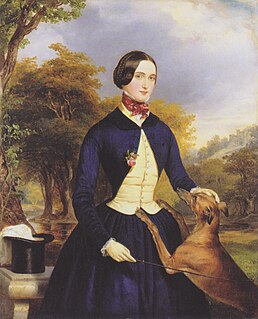 W
WA necktie, or simply a tie, is a piece of cloth worn for decorative purposes around the neck, resting under the shirt collar and knotted at the throat, and often draped down the chest.
 W
WAn ascot tie, ascot or hanker-tie is a neckband with wide pointed wings, traditionally made of pale grey patterned silk. This wide tie is usually patterned, folded over, and fastened with a tie pin or tie clip. It is usually reserved for formal wear with morning dress for daytime weddings and worn with a cutaway morning coat and striped grey formal trousers. This type of dress cravat is made of a thicker, woven type of silk similar to a modern tie and is traditionally either grey or black. A more casual form of ascot is in British English called a cravat, or sometimes as a day cravat to distinguish it from the formal ascot or dress cravat. The casual form is made from a thinner woven silk that is more comfortable when worn against the skin, often with ornate and colourful printed patterns.
 W
WThe bow tie is a type of necktie. A modern bow tie is tied using a common shoelace knot, which is also called the bow knot for that reason. It consists of a ribbon of fabric tied around the collar of a shirt in a symmetrical manner, so that the two opposite ends form loops.
 W
WA clip-on tie is a bow tie or necktie which is permanently tied, and worn by attaching it to the front of the shirt collar by a clip. Alternately, especially in the case of bow ties, the tie may have a band around the neck fastened with a hook and eye.
 W
WA collar pin is a piece of men's jewelry, which holds the two ends of a dress shirt collar together and passes underneath the knot of a necktie. Functioning in a similar way as a tabbed collar, it keeps the collar in place and lifts the knot to provide a more aesthetically pleasing arc to the necktie.
 W
WA continental tie is a type of bow tie partly covered by the dress shirt collar.
 W
WThe cravat is a neckband, the forerunner of the modern tailored necktie and bow tie, originating from a style worn by members of the 17th century military unit known as the Croats. The modern British "cravat" is called an ascot in American English.
 W
WThe focale, also known as a sudarium, was a woolen or linen scarf worn by ancient Roman military personnel. It protected the neck from chafing by the armor. The focale is depicted widely in military scenes from Roman art, such as the relief sculpture on the Arch of Septimius Severus in the Roman Forum and Trajan's Column. It is shown loosely knotted in the front, but is sometimes visible with the ends tucked inside the cuirass.
 W
WA jabot is a decorative clothing-accessory consisting of lace or other fabric falling from the throat, suspended from or attached to a neckband or collar, or simply pinned at the throat. Its current form evolved from the frilling or ruffles decorating the front of a shirt in the 19th century.
 W
WA kipper tie is a type of necktie primarily fashionable in Britain in the mid-1960s to late 1970s. The primary characteristics of the kipper tie are its extreme breadth and often garish colours and patterns.
 W
WThe school tie is part of the school uniform required by a large numbers English schools. The old school tie refers to a tie voluntarily worn by alumni of long established British schools. Figuratively, it is used to refer to the connection between members of the elite who attended the institutions: this is particularly associated with public schools.
 W
WA stock tie, or stock, is a style of neck wear. Originally a form of neck-cloth that was often stiffened and usually close-fitting, formerly worn by men generally, but post-nineteenth century only in use in military uniforms. Another type of stock is worn by certain clergy and consists of black silk or other fabric, that falls over the chest and is secured by a band around the neck. Equestrians wear a stock tie around the neck when dressed formally for a hunt or certain competitive events. Most equestrian competition rules require it to be white. It is mandated attire for use in dressage and the dressage phase of eventing. Use of the stock tie also is seen in show jumping and fox hunting. The stock tie continues to be in fashion for equestrians.
 W
WA tie chain is a neckwear-controlling device. Similar to tie clips and tie bars, it is used to hold in place a tie to the underlying shirt front, ensuring that the tie hangs straight. This accessory is composed of two parts, a durable clip and a chain. The clip attaches to a button or attaches to the placket on the shirt and when properly worn is covered entirely by the tie. The chain is then left to rest across the necktie, keeping the tie secure.
 W
WA tie pin is a neckwear-controlling device, originally worn by wealthy English gentlemen to secure the folds of their cravats. They were first popularized at the beginning of the 19th century. Cravats were made of silk, satin, lace and lightly starched cambric, lawn and muslin, and stickpins were necessary accoutrements to keep these expensive fabrics in place and safe. Stickpins commonly used pearls and other precious gemstones set in gold or other precious metals and were designed specifically for their owners.
 W
W